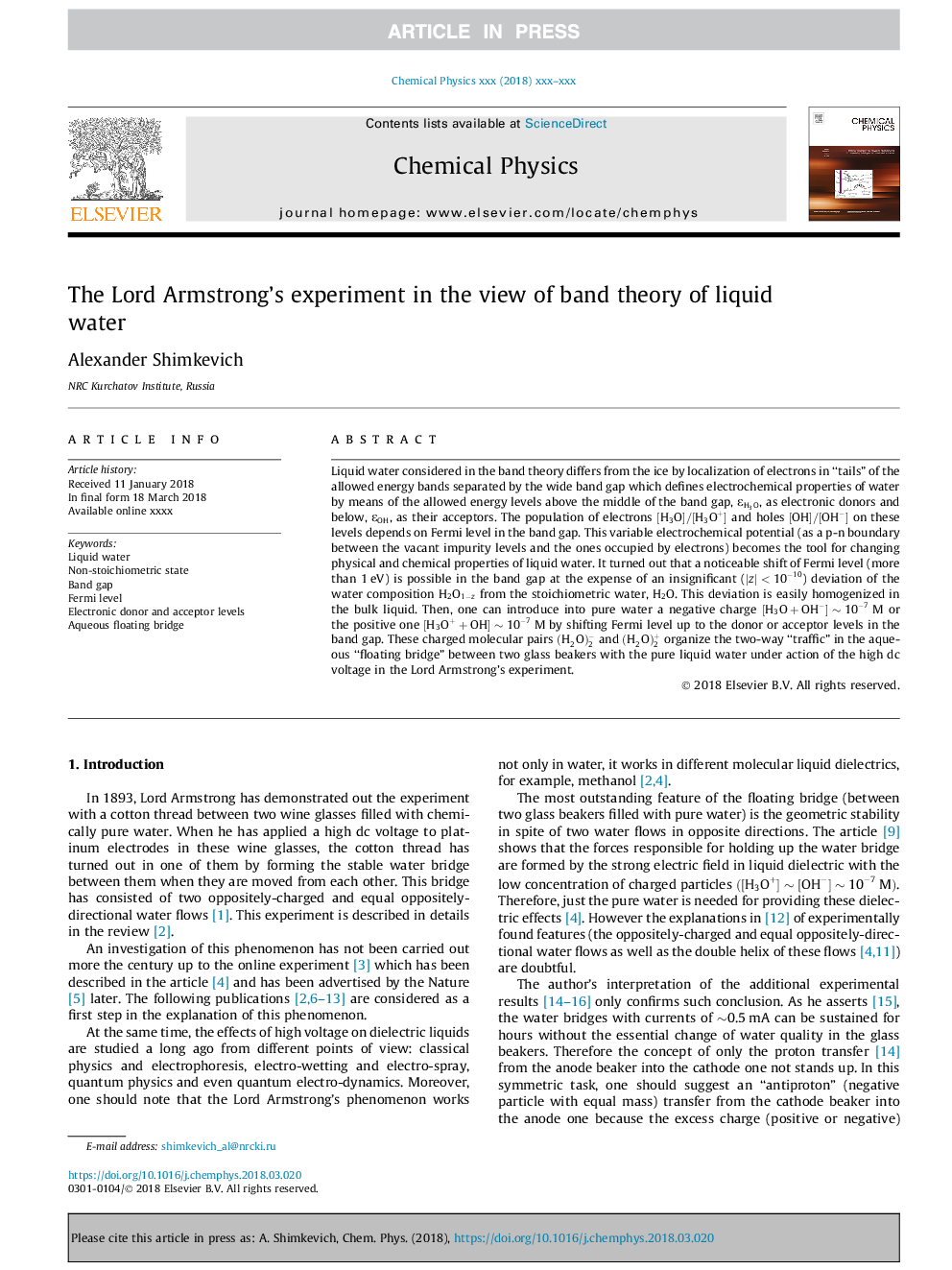| Article ID | Journal | Published Year | Pages | File Type |
|---|---|---|---|---|
| 7837154 | Chemical Physics | 2018 | 6 Pages |
Abstract
Liquid water considered in the band theory differs from the ice by localization of electrons in “tails” of the allowed energy bands separated by the wide band gap which defines electrochemical properties of water by means of the allowed energy levels above the middle of the band gap, εH3O, as electronic donors and below, εOH, as their acceptors. The population of electrons [H3O]/[H3O+] and holes [OH]/[OH-] on these levels depends on Fermi level in the band gap. This variable electrochemical potential (as a p-n boundary between the vacant impurity levels and the ones occupied by electrons) becomes the tool for changing physical and chemical properties of liquid water. It turned out that a noticeable shift of Fermi level (more than 1â¯eV) is possible in the band gap at the expense of an insignificant (|z|<10-10) deviation of the water composition H2O1-z from the stoichiometric water, H2O. This deviation is easily homogenized in the bulk liquid. Then, one can introduce into pure water a negative charge [H3O+OH-]â¼10-7M or the positive one [H3O++OH]â¼10-7M by shifting Fermi level up to the donor or acceptor levels in the band gap. These charged molecular pairs (H2O)2- and (H2O)2+ organize the two-way “traffic” in the aqueous “floating bridge” between two glass beakers with the pure liquid water under action of the high dc voltage in the Lord Armstrong's experiment.
Keywords
Related Topics
Physical Sciences and Engineering
Chemistry
Physical and Theoretical Chemistry
Authors
Alexander Shimkevich,
